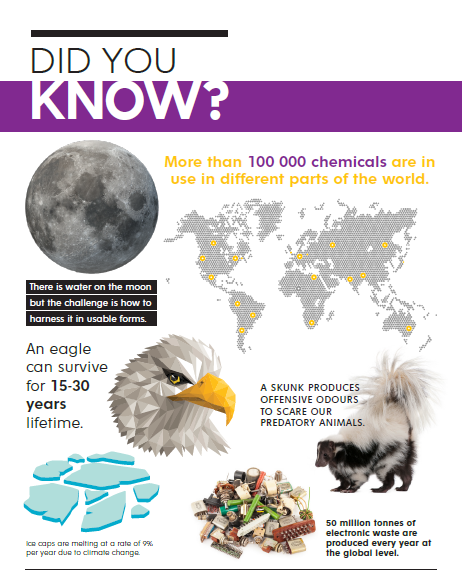CHENAI Waste Recycling Project
Scaling up waste management practices in Small Scale Enterprises in Zimbabwe. The Green Business Gazette interviews Mr Never Gariromo (NG), the Founder of CHENAI Project. This is an innovative project involving plastic recycling and value addition of plastic waste into pavers.
GBG: Can you briefly introduce yourself?
NG: I am Never Gariromo from the Community Health and Natural Resources Initiative (CHENAI) Waste Recycling Project in Karoi.
GBG: What is CHENAI and what does it do?
NG: Community Health Environmental and Natural Resources Initiatives (CHENAI) is a community service program established and founded by Never Gariromo and volunteers from Christian Faith Centre Assembly of the Apostolic Faith Mission in Zimbabwe based in Chikangwe Township in Karoi. In partnership with the Karoi Town Council and Environmental Management Agency (EMA) we conduct assessment studies, track and evaluate environment-related health problems through surveillance systems. We do this by working closely with local authorities and stakeholder organizations in preparing for and responding to natural, technological, humanitarian, and environmental management issues. According to CHENAI, the environment is everything around us – the air we breathe, the water we drink and use as well as natural resources.
GBG: What programs and initiatives have you undertaken so far in your waste recycling projects?
NG: Our waste recycling projects include turning plastic into construction pavers. The concept makes use of molten LDPE, PET and HDPE plastic as a binder to make construction pavers used on driveways, homestead car parks, garden and park pathways etc. We make use of used oil as a lubricant and part of the raw materials to make the bricks. We also make easy chairs and garden chairs from used tyres. We are into the production of organic fertilizer and manure from a mixture of hyacinth, market vegetable and food waste, cow dung and agriculture crop waste (e.g. maize stalks, rice husks, groundnuts husks etc.)
GBG: In the context of CHENAI, explain the concept of Waste to Energy and what it entails in detail
NG: The waste to energy concept is innovative technology that helps collection of waste separated at source. Waste is collected and deposited to a Waste Transfer Centre and then transported to the waste to electricity plant which is usually designated at an isolated plant site. At the plant, waste is incinerated to produce heat which will boil water into steam which eventually steam turns the turbines and generate power and we feed into the national grid.
Apart from making money through sale of electricity into the national grid, the innovation gets money from waste collection as the municipality will privatize the waste transfer Centre which collects gate fees. The incineration process also produces ash (which is used as typical cement for making roads etc.) and the separated metal and glass is sold to other recyclers on good fees. The waste to energy technology proposed by CHENAI is a waste incineration power plant equipped with the best available flue gas treatment technology. All waste incineration flue gases that are formed in the incineration process are treated and cleaned using the latest technologies so as to eliminate harm on the environment and people. The flue gas treatment of the technology fulfills highest norms and standards.
The waste-to-energy incineration process consists of following main segments and processes:
1. The grate and 1st furnace chamber, where the fuel is incinerated
2. The second furnace chamber, where the gaseous materials ignite and burn
3. The empty passes, where the flue gas thermal energy begins to transfer into the working fluid and most toxins are burnt out (2 seconds at 850 °C)
4. The heat transfer unit where the remaining thermal energy in the flue gas is transferred into the working fluid
5. Flue Gas Treatment (FGT) unit collecting the harmful substances in the flue gas. This system is commonly referred also as the Air Pollution Control (APC).
6. Stack that disperses the cleaned flue gases to outside air.
Each tonne of incinerated solid fuels and waste produces solid and gaseous pollutants like dust and heavy metals, Carbon monoxide (CO), Nitrogen oxides (NOx), Sulphur dioxide (SO2), Nitrous oxide (N2O), Hydrogen chloride (HCl), Hydrogen fluoride (HF).
Combinations of several individual flue gas treatment components are utilized to provide an effective overall Flue Gas Treatment system. The waste to energy incineration plant follows UNFCCC Emission limits with flue gas cleaning to provide a sustainable and efficient solution.
GBG: On a large scale, how can Zimbabwe benefit from Waste to Energy conversion initiatives?
Waste to Energy concept can contribute more than 300MW to the national grid. The gains are fivefold:
- Municipal waste is dealt with in a scientifically eco-friendly manner
- The urban dwellings are automatically made sustainably clean
- More than 1 000 000 jobs are created nationwide (this includes engineers, technicians, skilled labor etc.)
- A new industry will emerge thus enabling and directly contributing towards the vision2030 which Zimbabwe is to attain upper middle income economy
- The whole process will contribute towards remarkable reducing effects of climate change regionally and globally
GBG: What challenges have you faced in your waste recycling operations and how are you addressing these challenges?
NG: The waste management industry is not yet a popular industry in Karoi, Mashonaland West and Zimbabwe at large. Resources like waste management oriented machinery and equipment are imported at a high cost. However, we are lobbying with universities and colleges through innovation hubs to develop technologies, machinery and equipment to cut off import bills. As CHENAI we are devising and lobbying with councils, Parliament and relevant ministries for the crafting of a Waste Management policy.
GBG: How can local communities benefit from Waste recycling?
NG: Local communities will benefit from waste recycling in many ways. Firstly, separation of waste at source will be introduced thus making their homesteads more environmentally clean. Waste recycling leads to job creation across the value chain in the waste to energy industry thus household income levels will be increased. Communities will also benefit from skills transfer in the industry and local businesses development.
GBG: Which other projects have you done as CHENAI Waste recycling and how have these impacted the community?
NG: CHENAI did a community green (renewable energy project). This was an installation of solar energy at Dete clinic, Karuru clinic in Hurungwe District, and a clinic and two schools in Mutasa District benefited from the one time project. We have also worked with the Ministry of Environment, Water and Climate Change in 2016 in the installation of the solar power supply to the 3 clinics and 2 schools.
GBG: How are you contributing to climate change in your recycling projects?
NG: Our plastic recycling project uses biogas as source of energy for melting the plastic. The Biogas is produced from biodegradable materials which would have been dumped at the dumpsite to generate methane, a Greenhouse Gas into the environment. Our manure making project also avoids methane because of the anaerobic process. Therefore our contribution to climate change is climate change mitigation through the reduction of GHG emissions from waste.
GBG: What is your contribution to Sustainable Development Goals and what kind of support do you need in your operations from the relevant stakeholders?
NG: Our project contributes in creating sustainable clean cities. The manure making project contributes towards food security as we provide access to organic fertilizer which is cheap and easily available for small scale farmers supporting the Pfumvudza concept
GBG: What is the feedback you are getting from stakeholders regarding your work?
- Karoi municipality provides land and working space
- EMA provides technical support
- Colleges provides with academic and scientific support such as Chinhoyi CUT and University of Zimbabwe



